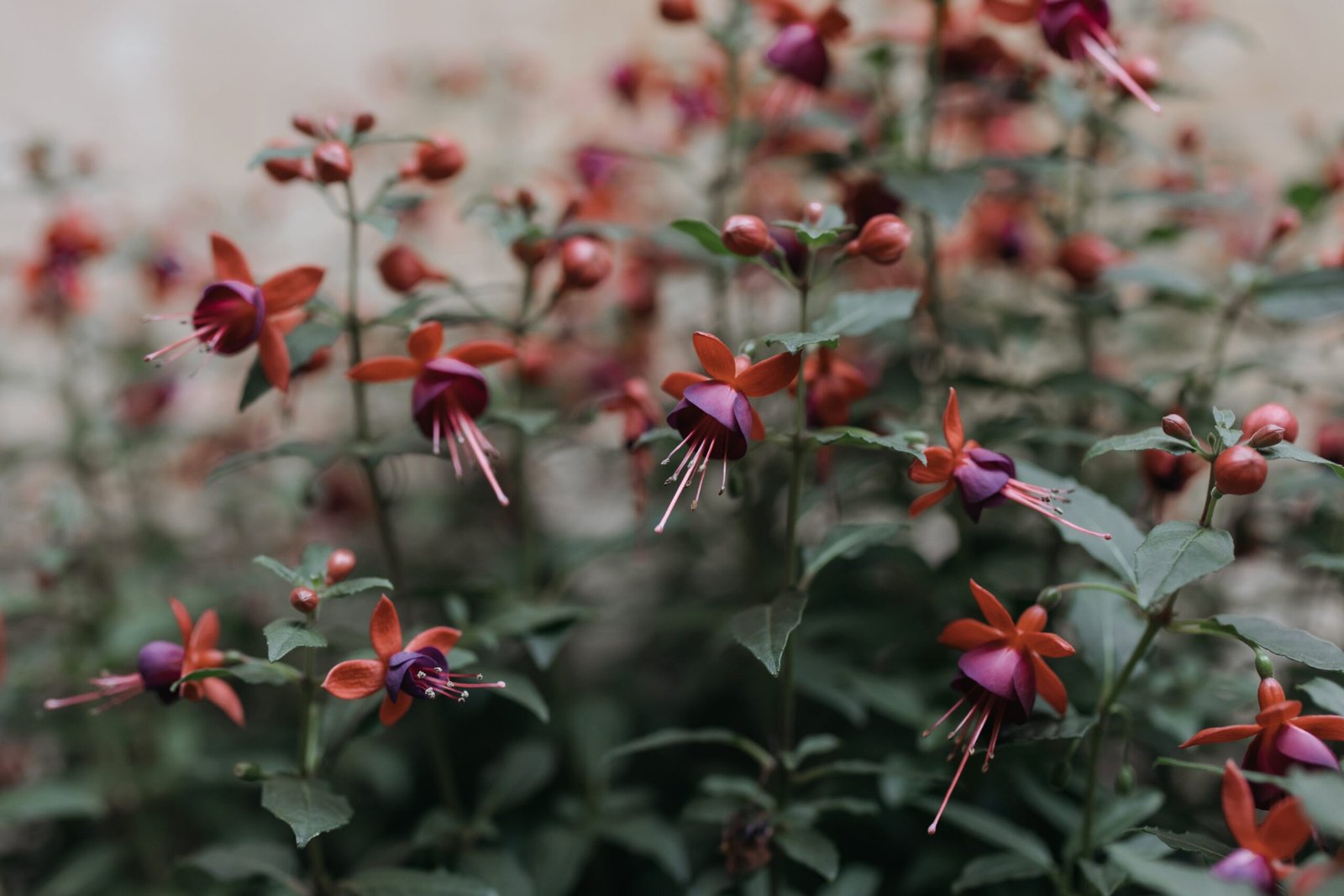- Lotus: How to Plant, Grow and Care for Lotus - 3 November 2023
- Zinnia: How to Plant, Grow and Care for Zinnia - 3 November 2023
- Coreopsis: How to Plant, Grow and Care for Coreopsis - 3 November 2023
Fuchsia plant, also known as lady’s eardrops, is a beautiful flowering plant that features bright, pendulous flowers in a variety of colors, including pink, purple, and red. Native to Central and South America, fuchsias are often grown as ornamental plants in hanging baskets or containers. With their graceful, drooping blooms and vibrant hues, fuchsias add a pop of color to any garden or outdoor space.
About Fuchsia:
The Fuchsia is a stunning plant with various types to choose from, including upright, trailing, and shrub-like varieties. Its life cycle is typically perennial, although it can be treated as an annual in colder regions.
The Fuchsia blooms from spring to fall, offering a prolonged period of colorful flowers. Its extended bloom time makes it a popular choice for gardeners looking for vibrant displays throughout the growing season.
Characteristics:
The Fuchsia plant is a magnet for bees, butterflies, and hummingbirds, making it an excellent addition to any pollinator garden. Not only is it attractive to wildlife, but it is also easy to grow and maintain, ideal for both novice and experienced gardeners alike. Although not edible, Fuchsias often have a delightful fragrance.
Fuchsias are widely used as ornamental plants due to their impressive foliage and eye-catching flowers, often found in hanging baskets, containers, or as borders in flower beds. Additionally, Fuchsias can be fast-growing, quickly filling spaces and creating a lush and vibrant garden.
Growing Conditions:
Fuchsias thrive in well-draining soil and prefer a location with partial sun to shade exposure. They require consistent moisture and benefit from regular watering during dry periods. Fuchsias also prefer a slightly acidic soil pH ranging from 5.5 to 6.5.
Resistance:
While Fuchsias are not typically favored by deer or rabbits, they can be susceptible to diseases such as rust, fusarium wilt, downy mildew, and powdery mildew. Therefore, it is important to monitor their health and provide appropriate care to prevent these issues.
| Season | Depth | Height | Spacing | US Hardiness Zone |
|---|---|---|---|---|
| Spring to Summer | 0.25 to 0.5 inches | 24 to 36 inches | 18 to 36 inches | 6 to 9 |
Plant Care Instructions
Light Requirement
Fuchsias can tolerate full sun, but they prefer partial shade or full shade for optimal growth.
Water Need
Fuchsias have moderate water needs. Keep the soil evenly moist but not waterlogged. Water deeply when the top inch of soil feels dry.
Fertilizer
For fertilizing fuchsias, a balanced fertilizer with a ratio of 10-10-10 or 20-20-20 can be used. For those preferring organic options, you can try using compost, manure, or organic granular fertilizers.
Pruning
To promote bushier growth and more blooms, prune fuchsias regularly. Remove any dead or damaged branches. For trailing varieties, pinch back the tips of the stems to encourage branching.
Toxicity
Fuchsias are not known to be toxic to humans or pets.
Common Issues
Common issues with fuchsias include aphids, whiteflies, and spider mites. Keep an eye out for these pests and use appropriate measures to control them. Fuchsias are also susceptible to root rot if overwatered, so avoid excessive watering.
Culinary Benefits:
- Fuchsia flowers and berries can be used to add a unique flavor to various culinary creations.
- The vibrant, edible flowers can be used to beautify and flavor salads, desserts, and drinks.
- Infusing fuchsia flowers into vinegar or oil can create a delightful dressing or marinade.
- The tart and tangy fuchsia berries can be used in jams, jellies, sauces, and even baked goods.
Medicinal Benefits:
- Fuchsia plants have been traditionally used in herbal medicine for their potential health benefits.
- They contain antioxidants that may help protect the body against free radicals and oxidative stress.
- The leaves of some fuchsia species have astringent properties and can be used topically to soothe minor skin irritations.
- The flowers and leaves are sometimes used in herbal teas to support respiratory health.
- Some research suggests that fuchsia berries may have anti-inflammatory properties and could potentially aid in digestive health.
- However, it’s important to note that further scientific studies are needed to fully understand the medicinal benefits of fuchsia.
Companion Plants for Fuchsia:
1. Lobelia: These small, delicate flowers make a perfect companion for fuchsias, as they thrive in similar growing conditions and their vibrant colors create a beautiful contrast.
2. Impatiens: These shade-loving plants are an excellent choice to pair with fuchsias, as they provide a stunning display of colors and help create a lush and vibrant garden bed.
3. Begonias: With their vibrant blooms and attractive foliage, begonias not only enhance the beauty of fuchsias but also provide shade to protect the delicate flowers from excessive sun exposure.
4. Lamium: This groundcover plant adds a touch of elegance to fuchsia beds and helps keep the soil moist, which is beneficial for both plants.

